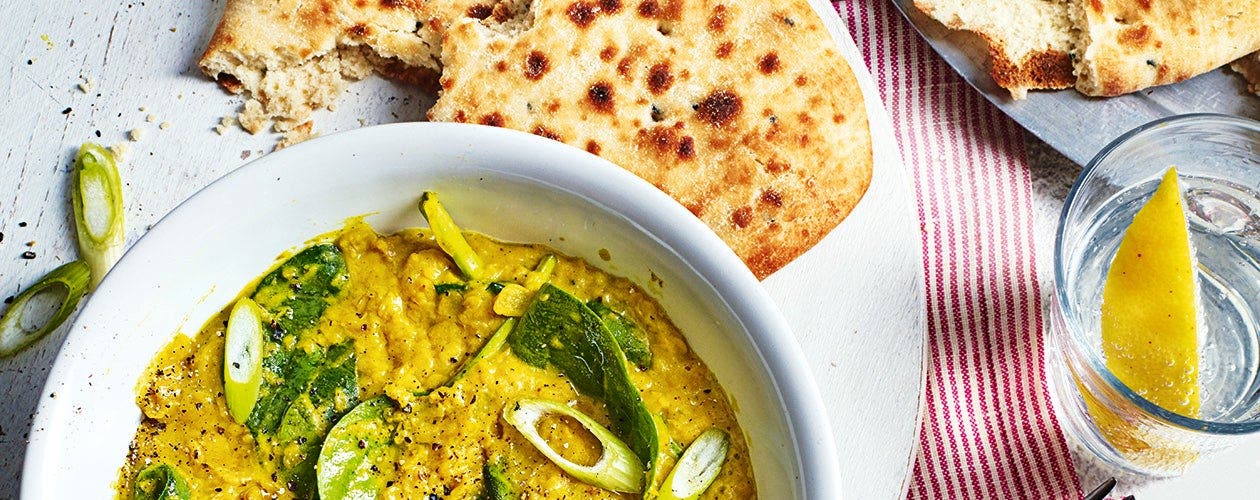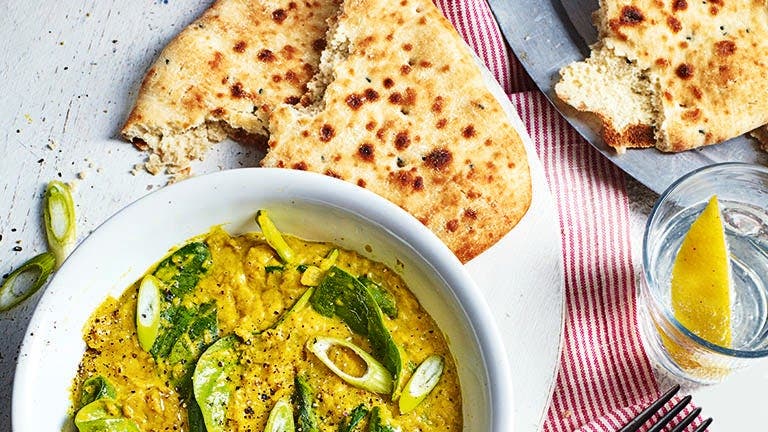Let’s go out for…Indian


Whether your favourite Indian restaurant resembles the Taj Majal or a trendy food truck, you’re sure to encounter some tempting staples of the Indian table.
Here’s how to make the most of your meal while minimising extras that will tack on hidden Points® values. Find out more about Points.
Settle for a taste
While Indian food can be calorie-intensive, it’s not always necessary to have a full-course meal for an authentic taste. Rather than sit down for a huge meal, incorporate Indian flavours into your day with a smaller takeaway from a curry house that specialises in one item, like an order of tandoori, vegetarian dosa or kadhi, a spicy dish with thick chickpea gravy.
Go easy on the naan
Naan, the most popular bread in Indian restaurants, can easily measure 10 inches across and comes brushed with ghee (clarified butter) and garlic. Having one is like eating an entire personal pizza crust! Save on Points and try roti instead. Unlike naan bread, roti (also known as chapati) is unleavened and is available in white or whole grain. Made in a frying pan, it closely resembles a wholewheat tortilla.
CHECK OUT: 2 ingredient naan bread recipe
Avoid the appetiser trap
The “pakora,” “samosa” and “bhaji” families of small bites all indicate deep-frying. Be really careful about portions here if you’re looking to cut back on Points. Instead, request an appetiser of flavoursome lentil soup.
Eat more tandoori
The flavour of grilling with the moist succulence of baking, tandoori dishes are that elusive combination of healthy and flavoursome. Meats are traditionally marinated in spices and yoghurt for up to 24 hours, delivering amazing flavour and moistness. Whether you choose chicken, fish or meat, this curry recipe represents one of the best methods of cooking and should be top of your list.
Choose your chutney
The Indian restaurant table is a build-your-own feast, set with chutneys as key condiments, usually one red and one green. If you can handle the spice, the green chutney is the best choice. Made with mint, coriander and spicy chillies, this herbal and fiery condiment brings big flavour. That sweet red chutney, on the other hand, is loaded with fruit sugars from tamarind, dates or mango, meaning it's higher in Points.
Turn up the heat
As with Thai and Chinese cuisine, it’s perfectly acceptable to request your dish be made mild, medium, or spicy. The calories and Points will be the same, but most people tend to eat less of a mouth-searing dish.
RECIPE: Spicy dhal soup with butternut squash
Get the raita stuff
Raita is a cooling condiment of yogurt, cucumber, and coriander flavoured with cumin and other spices. While the yogurt is generally of the whole-milk variety, with no additional calories, a serving of raita is generally low in Points. To quell the burning from a hot spice, a spoonful is a much better solution than chowing on rice and bread. Try this mushroom and spinach curry with raita at home.
Avoid creamy dishes
“Masala” is your friend, a word that denotes a rich mix of Indian spices. Occasionally, however, you’ll encounter some other “m” words in place of, or alongside, masala. “Makhami” refers to a rich sauce oozing with ghee and heavy cream. “Malai”, popular in the dish Malai prawns, among others, refers to rich, clotted cream with up to 55 percent butterfat.
Verify the vegetarian
Most Indian restaurants have a large selection of vegetarian meals. However, there are many fatty vegetarian dishes where you still need to watch portions. For instance, malai kofta are vegetarian dumplings swimming in heavy cream. And “paneer” indicates firm cheese, which is almost always fried.
